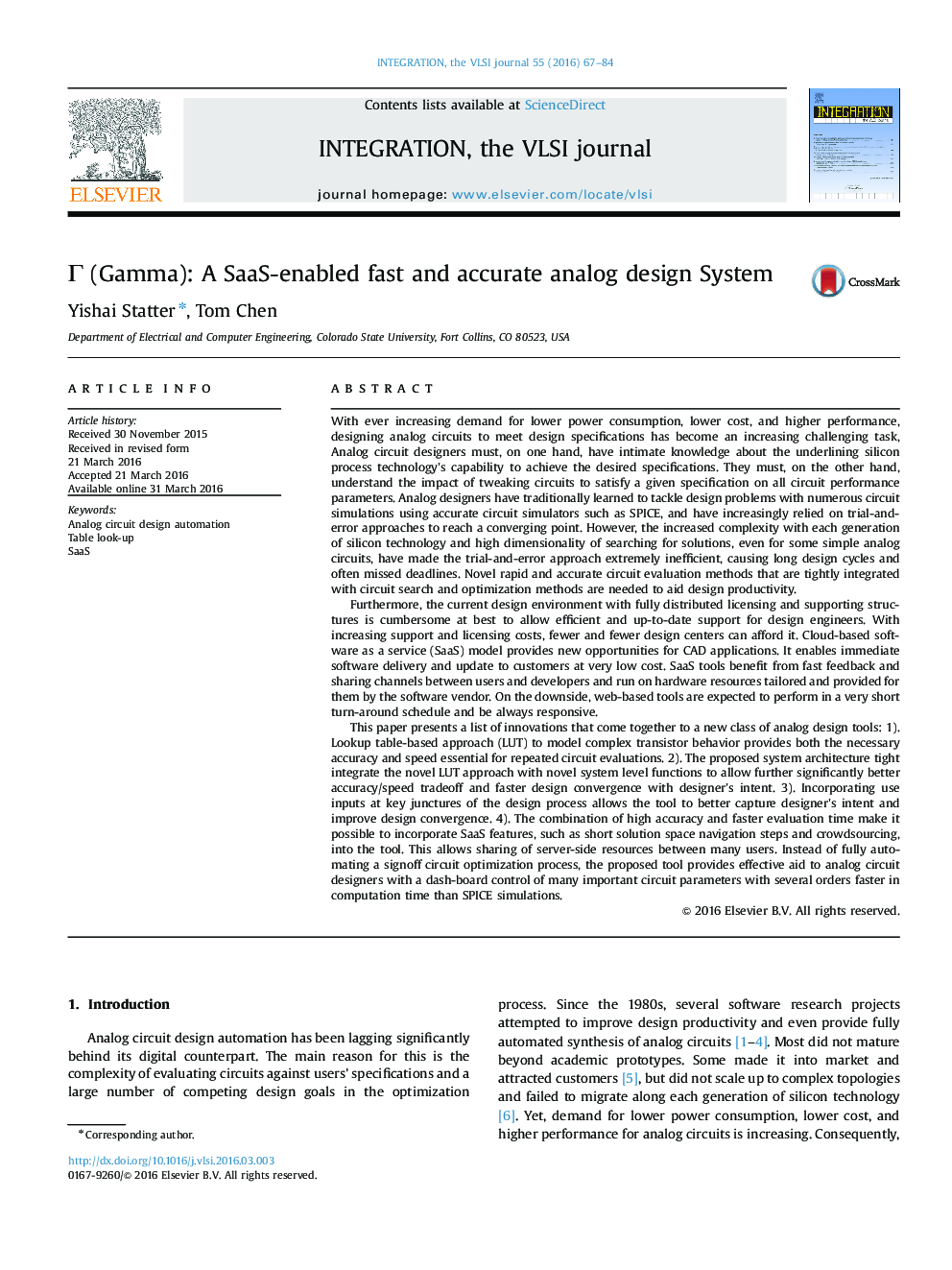| Article ID | Journal | Published Year | Pages | File Type |
|---|---|---|---|---|
| 542568 | Integration, the VLSI Journal | 2016 | 18 Pages |
With ever increasing demand for lower power consumption, lower cost, and higher performance, designing analog circuits to meet design specifications has become an increasing challenging task, Analog circuit designers must, on one hand, have intimate knowledge about the underlining silicon process technology׳s capability to achieve the desired specifications. They must, on the other hand, understand the impact of tweaking circuits to satisfy a given specification on all circuit performance parameters. Analog designers have traditionally learned to tackle design problems with numerous circuit simulations using accurate circuit simulators such as SPICE, and have increasingly relied on trial-and-error approaches to reach a converging point. However, the increased complexity with each generation of silicon technology and high dimensionality of searching for solutions, even for some simple analog circuits, have made the trial-and-error approach extremely inefficient, causing long design cycles and often missed deadlines. Novel rapid and accurate circuit evaluation methods that are tightly integrated with circuit search and optimization methods are needed to aid design productivity.Furthermore, the current design environment with fully distributed licensing and supporting structures is cumbersome at best to allow efficient and up-to-date support for design engineers. With increasing support and licensing costs, fewer and fewer design centers can afford it. Cloud-based software as a service (SaaS) model provides new opportunities for CAD applications. It enables immediate software delivery and update to customers at very low cost. SaaS tools benefit from fast feedback and sharing channels between users and developers and run on hardware resources tailored and provided for them by the software vendor. On the downside, web-based tools are expected to perform in a very short turn-around schedule and be always responsive.This paper presents a list of innovations that come together to a new class of analog design tools: 1). Lookup table-based approach (LUT) to model complex transistor behavior provides both the necessary accuracy and speed essential for repeated circuit evaluations. 2). The proposed system architecture tight integrate the novel LUT approach with novel system level functions to allow further significantly better accuracy/speed tradeoff and faster design convergence with designer׳s intent. 3). Incorporating use inputs at key junctures of the design process allows the tool to better capture designer׳s intent and improve design convergence. 4). The combination of high accuracy and faster evaluation time make it possible to incorporate SaaS features, such as short solution space navigation steps and crowdsourcing, into the tool. This allows sharing of server-side resources between many users. Instead of fully automating a signoff circuit optimization process, the proposed tool provides effective aid to analog circuit designers with a dash-board control of many important circuit parameters with several orders faster in computation time than SPICE simulations.
